Cold Start Yogurt: Make it with or Without an Instant Pot (+Video)
Sneak Preview: Make cold-start yogurt at home and save valuable time. No high heat or cool-down is required. An Instant Pot is optional. FAQ and video included.
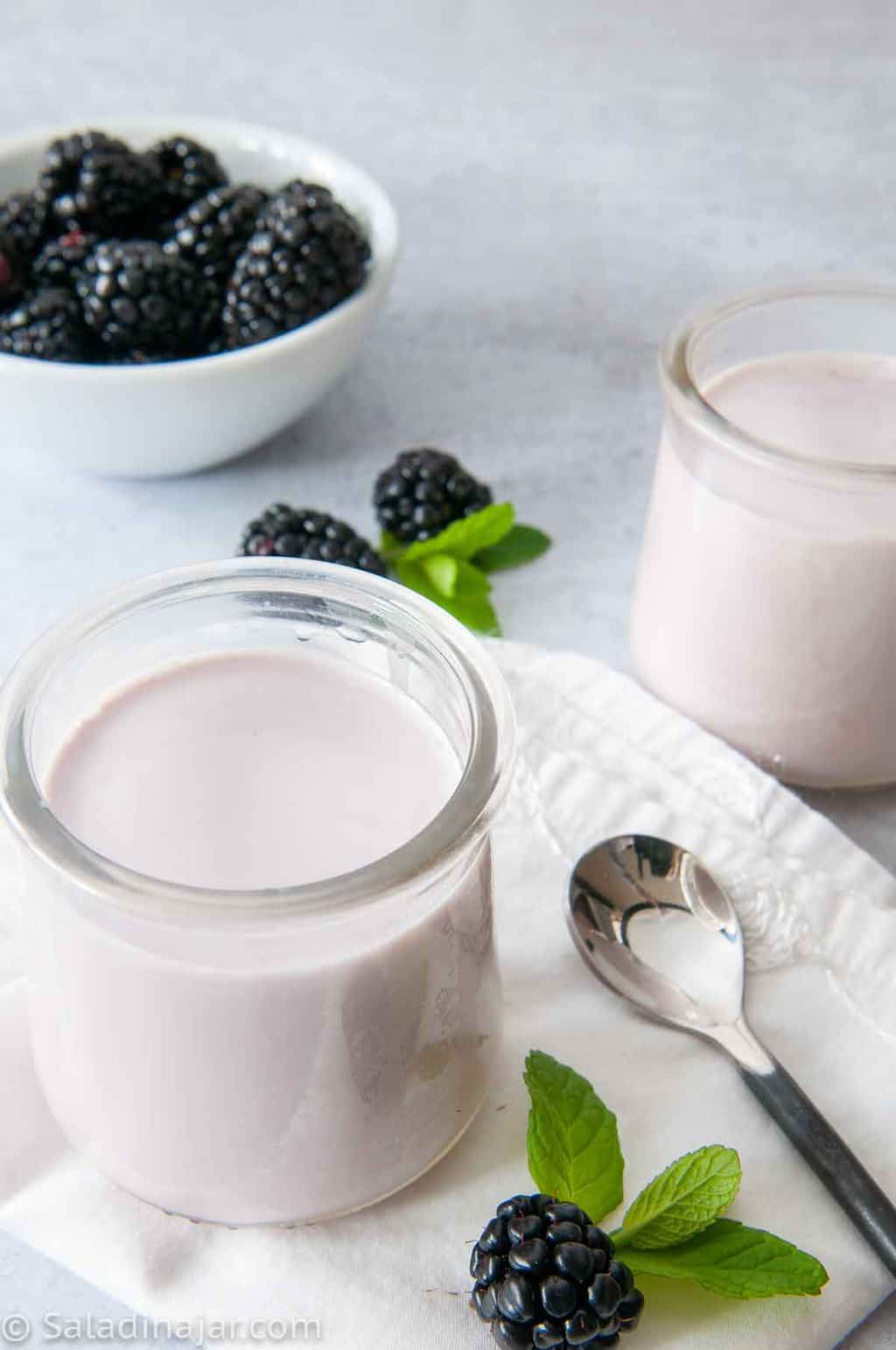
As an Amazon Associate, I earn from qualifying purchases.
The minimal hands-on time the cold start method requires for making yogurt will amaze you. Even busy people can weave the simple process into their schedule.
I felt dazed and confused when I started making traditional yogurt over 12 years ago. It was hard to know who to believe with all the different instructions on the internet.
Same thing with cold start yogurt. Now, I’m ready to eliminate the myths and misinformation about this time-saving method.
Don’t worry if you’ve never made yogurt before. This post will make it easy for pros and beginners alike. Be sure to look at the FAQ below for answers to basic and not-so-basic questions.
Happy Bakers Speak Up
“I love this cold start method and make Greek yogurt all the time.” —KLW
What Is Different About the Cold Start Method?
You don’t heat the milk before incubation. As a result, you don’t need a cool-down period.
In the simplest terms possible, that is the only difference!
You just shaved at least an hour and a half off the time it will take to make your next batch of yogurt.
There is a catch!!
You must use ULTRA-FILTERED milk. Not ultra-pasteurized milk. Not organic milk. Not regular milk. Not milk from happy cows eating grass on a hillside in California.
ADDENDUM: Some people have written to say they use this method with ultra-pasteurized milk, which works for them. I tried again with another brand I had not tried before. It worked. So, experimentation is in order with ultra-pasteurized milk. At this point, I can’t explain why some brands work and others don’t.
Sometimes, two or more labels will co-exist on the same milk bottle. As long as one of the labels is ultra-filtered, you are good.
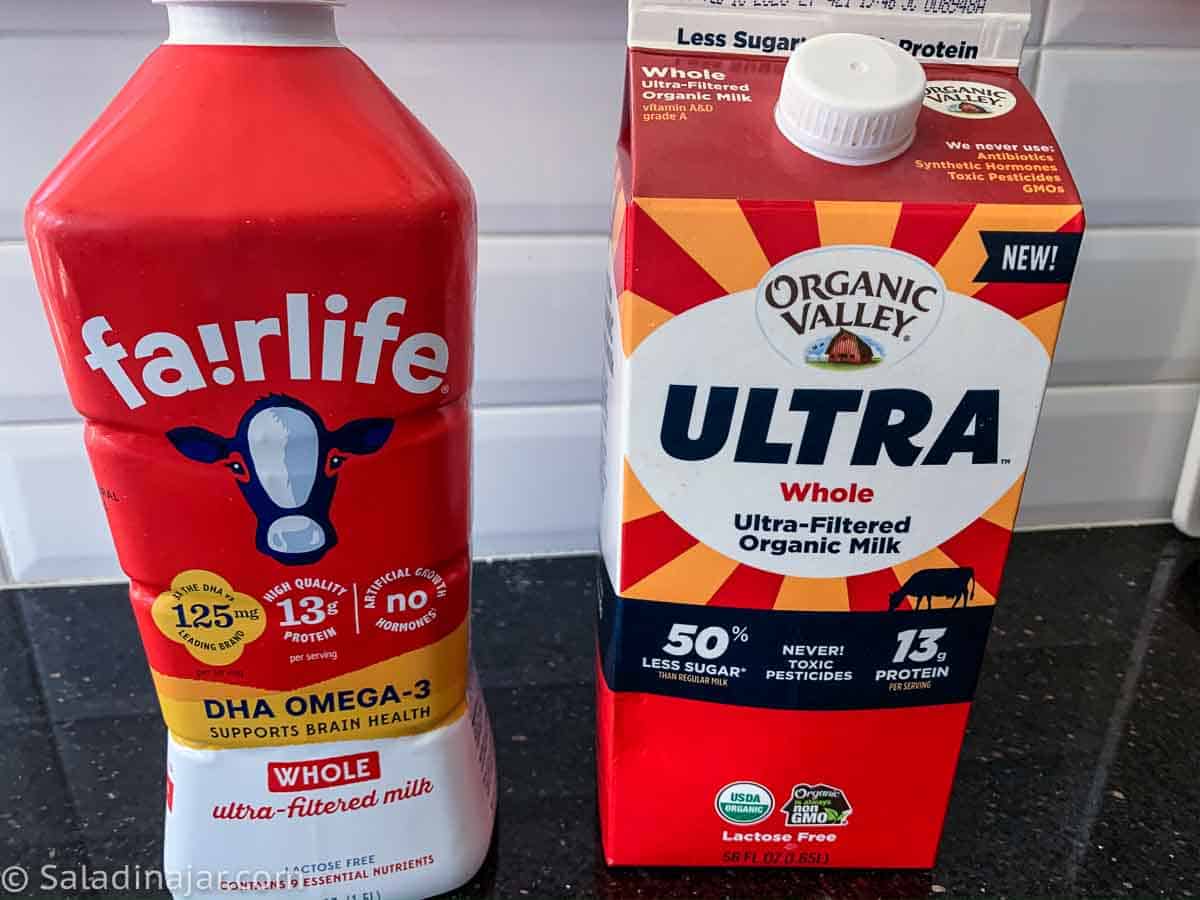
If you are a yogurt newbie, see a complete tutorial plus a video for the traditional method here. If you’ve never made yogurt, check out Five Things You Should Not Do When Making Yogurt.
Ready to get started?
Preparing the Starter
Use store-bought yogurt or homemade yogurt as a “starter.” If using a freeze-dried starter, follow the directions on the package to activate it.
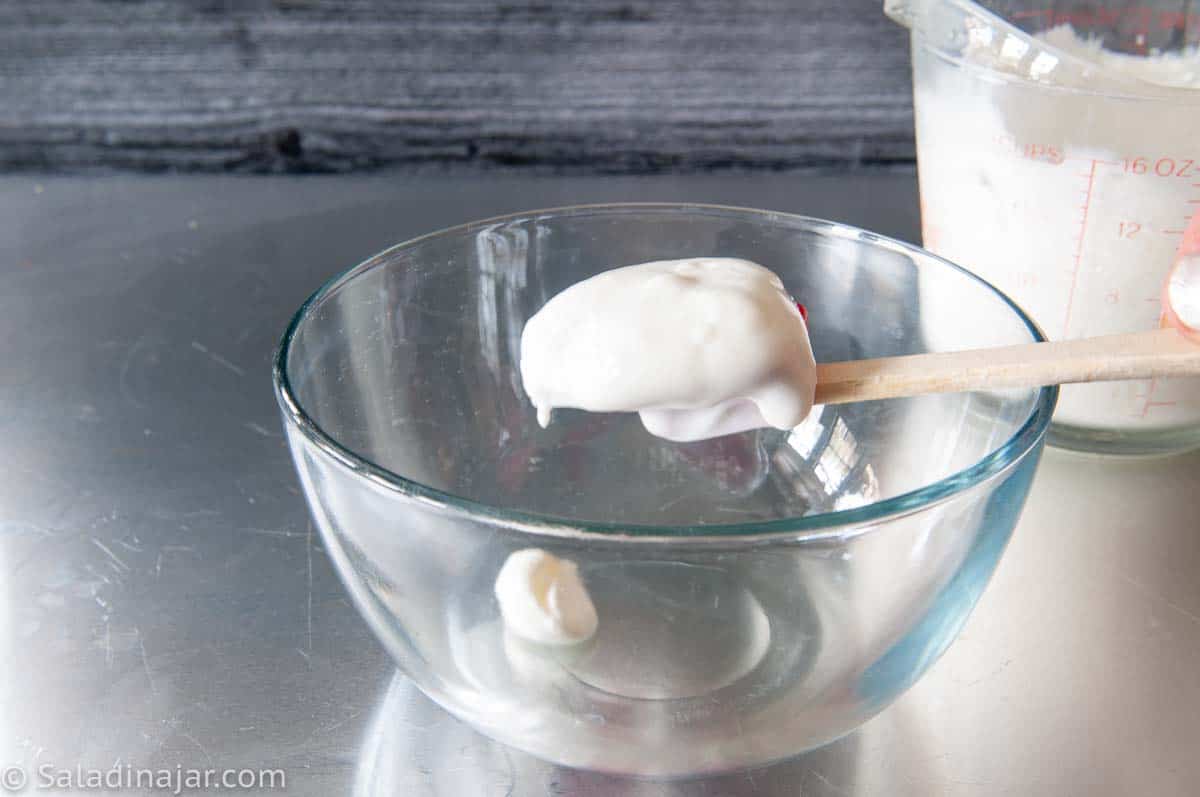
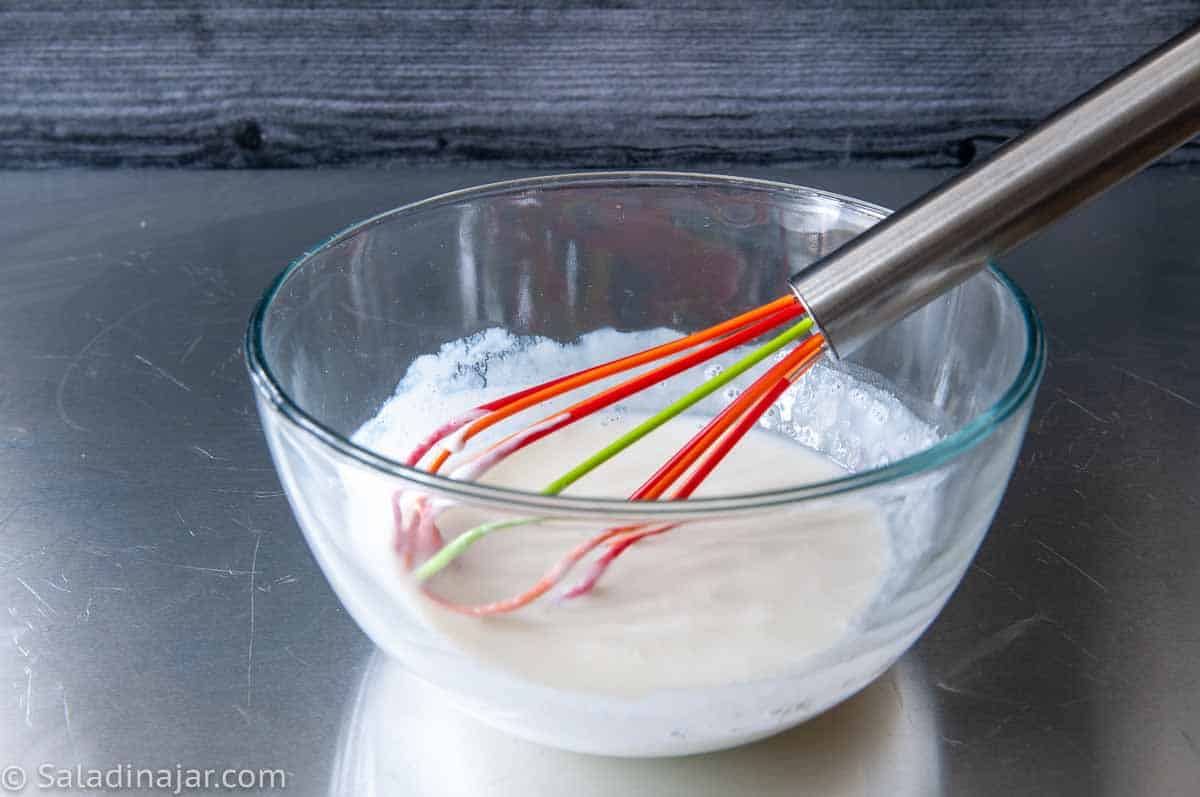
Don’t warm the milk unless you want to. The little yogurt bodies will wake as the milk warms during incubation.
Cold Start Method Without an Instant Pot
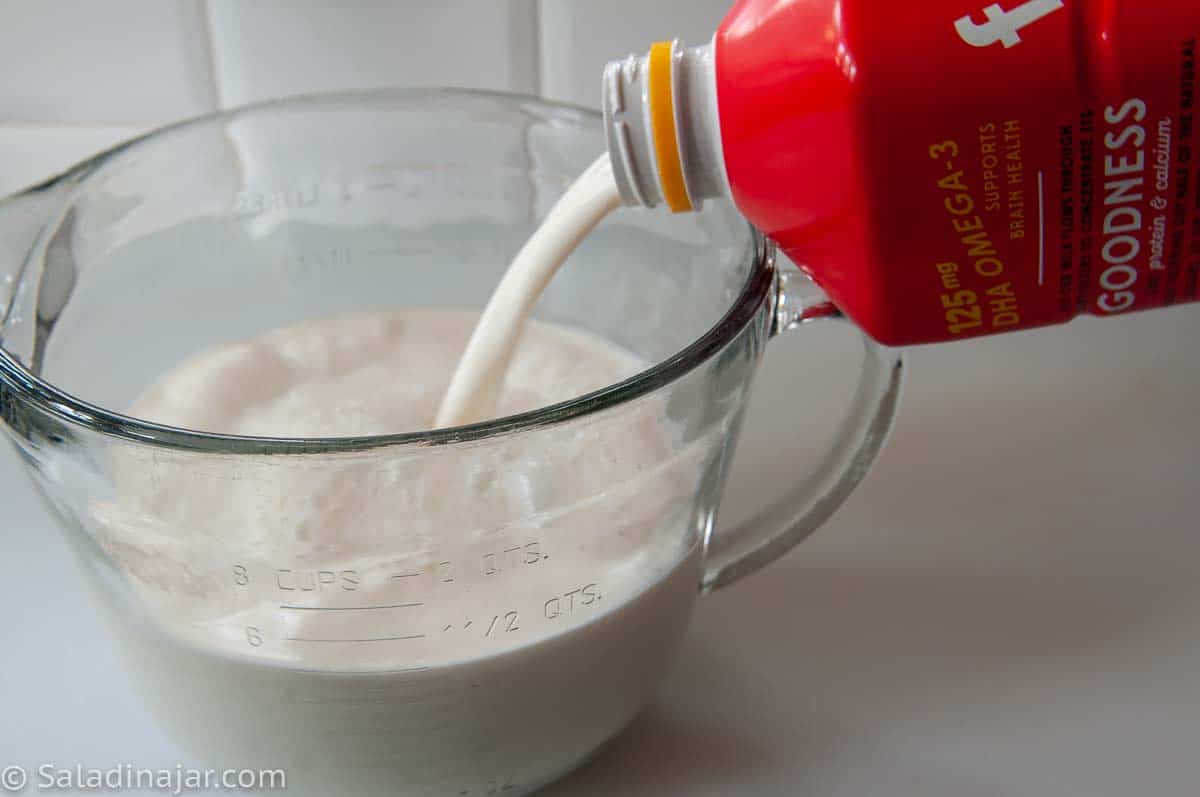
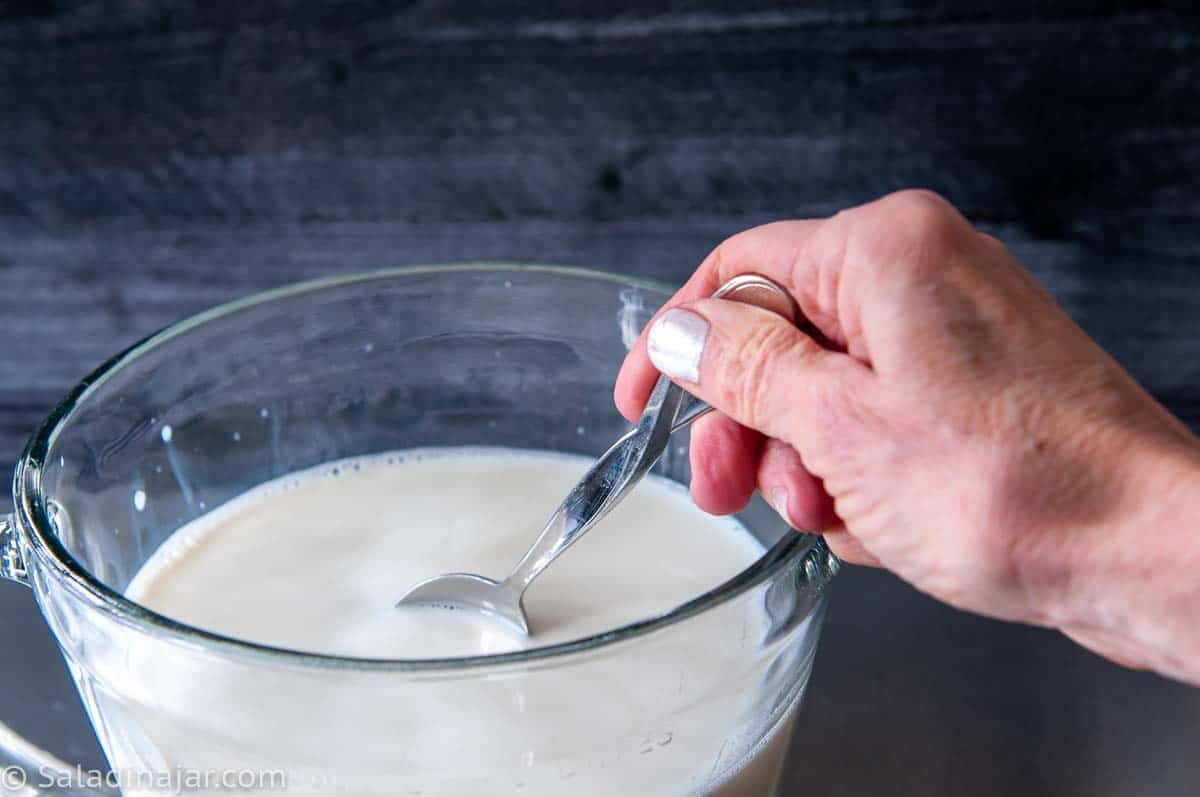
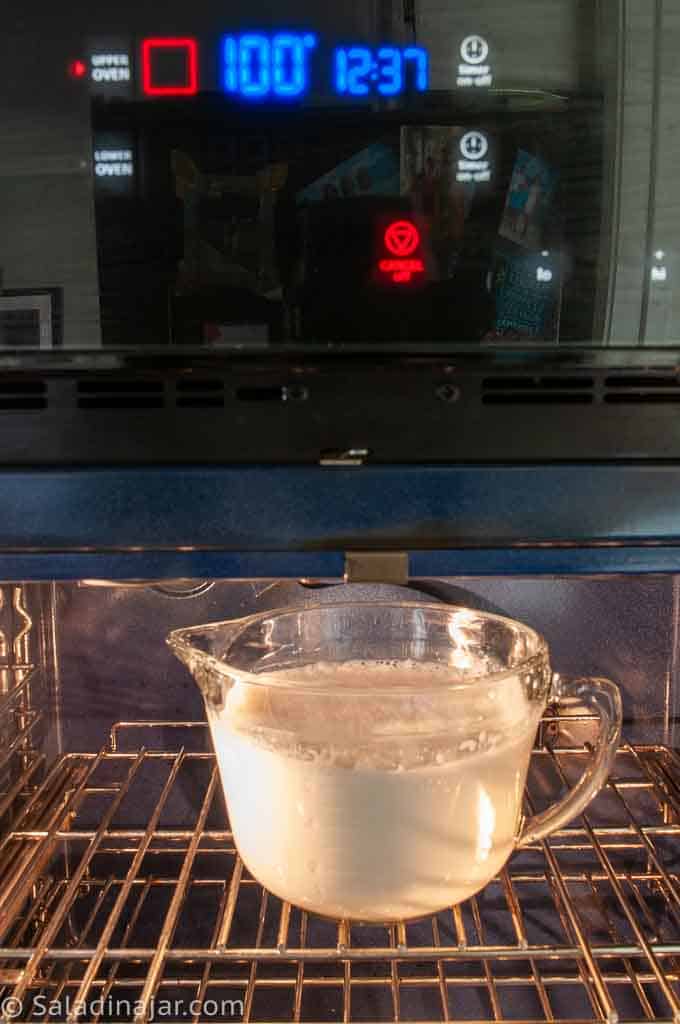
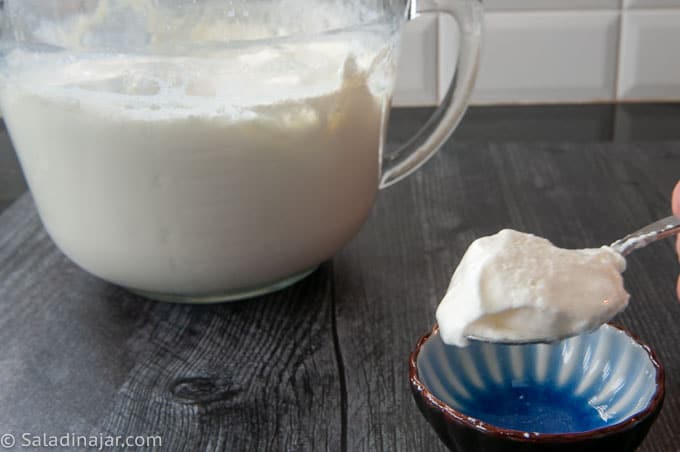
OR
Cold Start Method with an Instant Pot
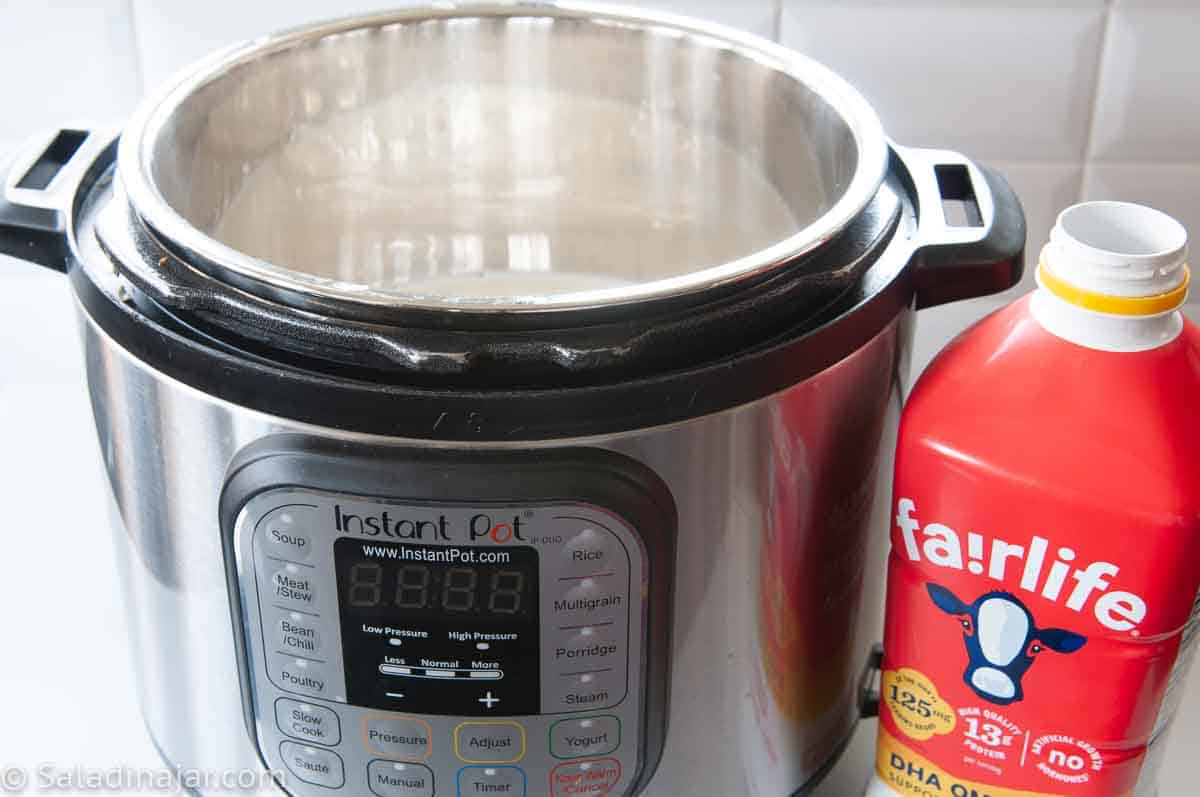
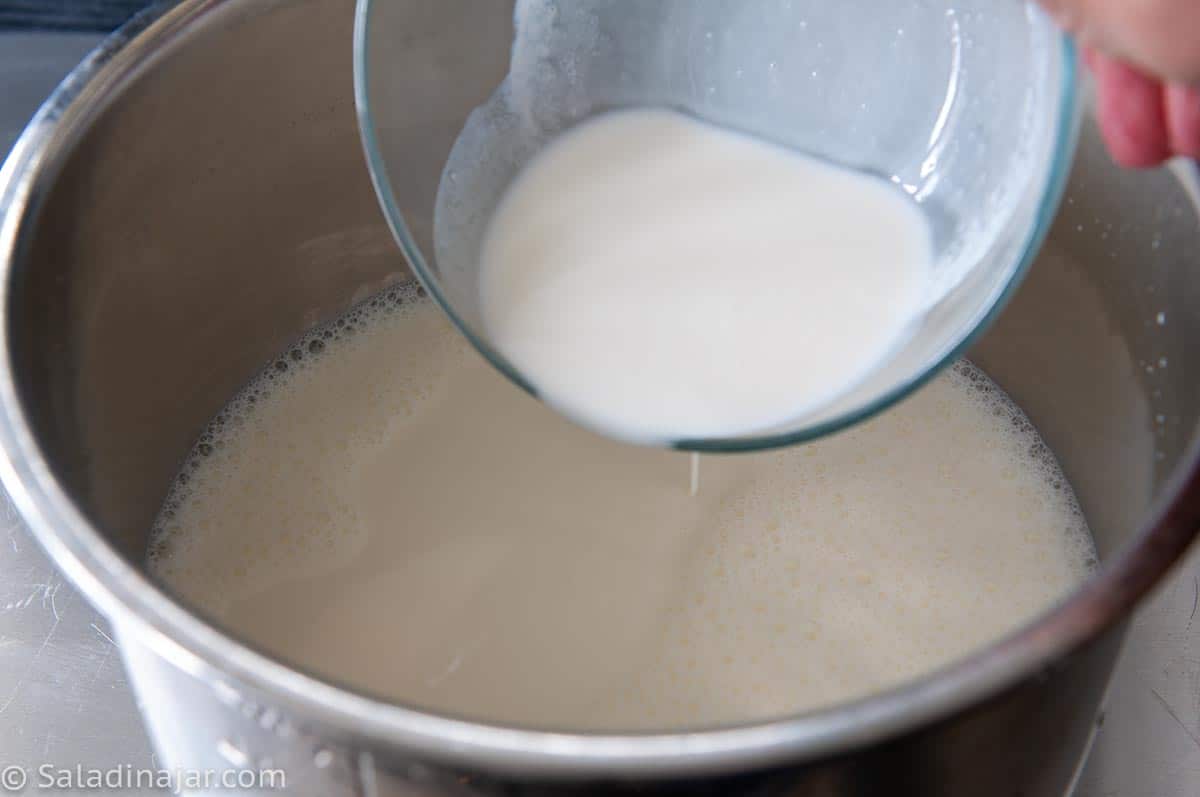
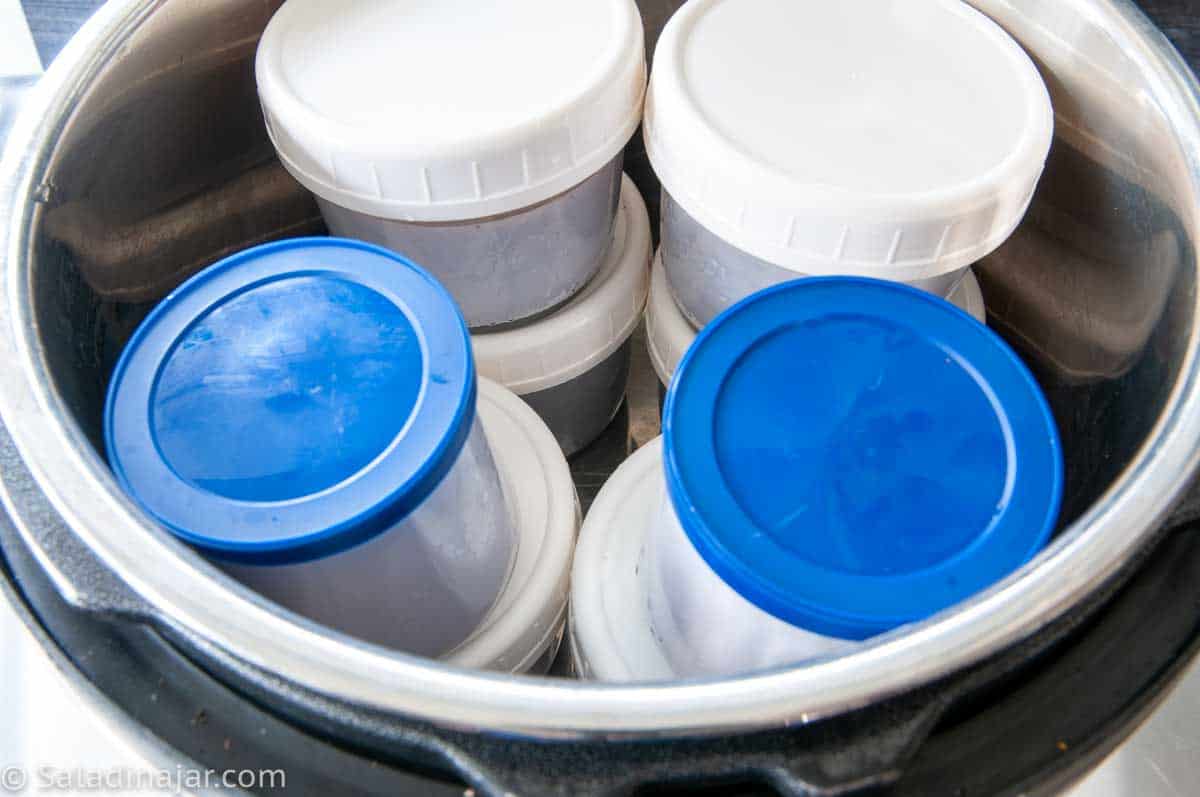
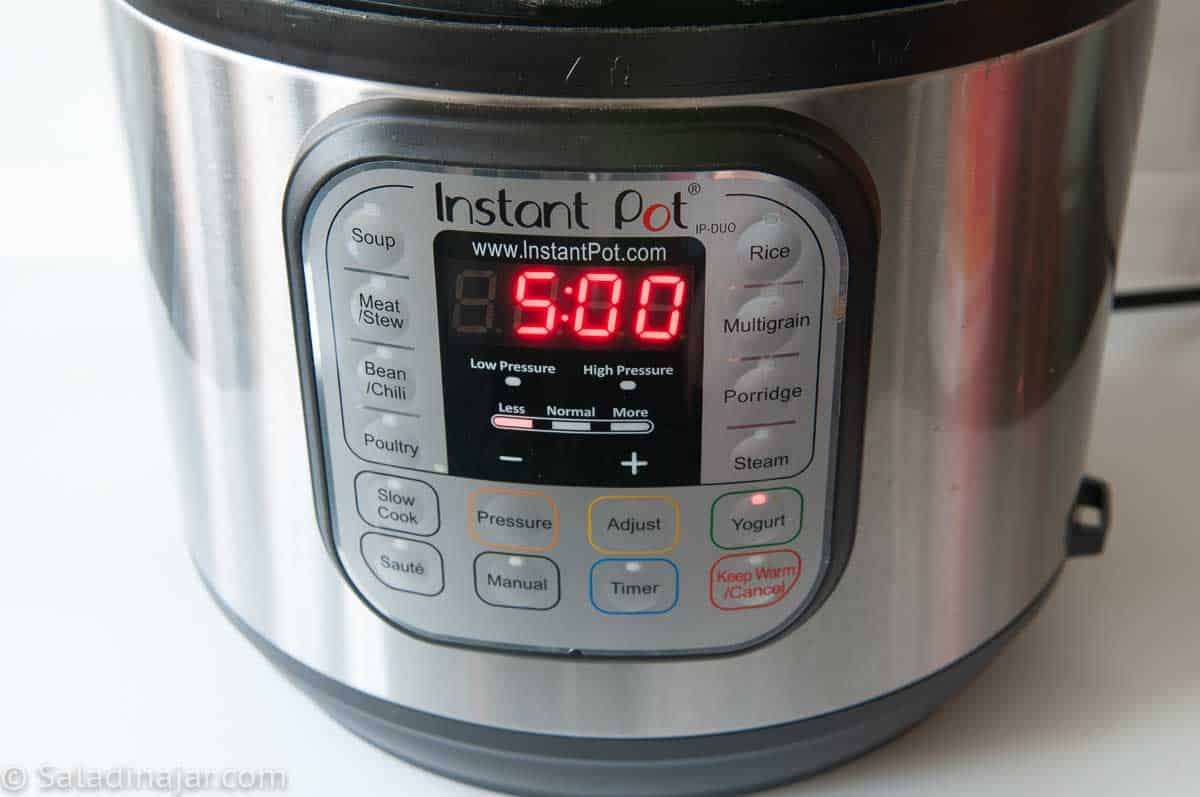
It is not necessary to seal the pot. You will not use any pressure. Twist the lid into place on top to preserve the heat.
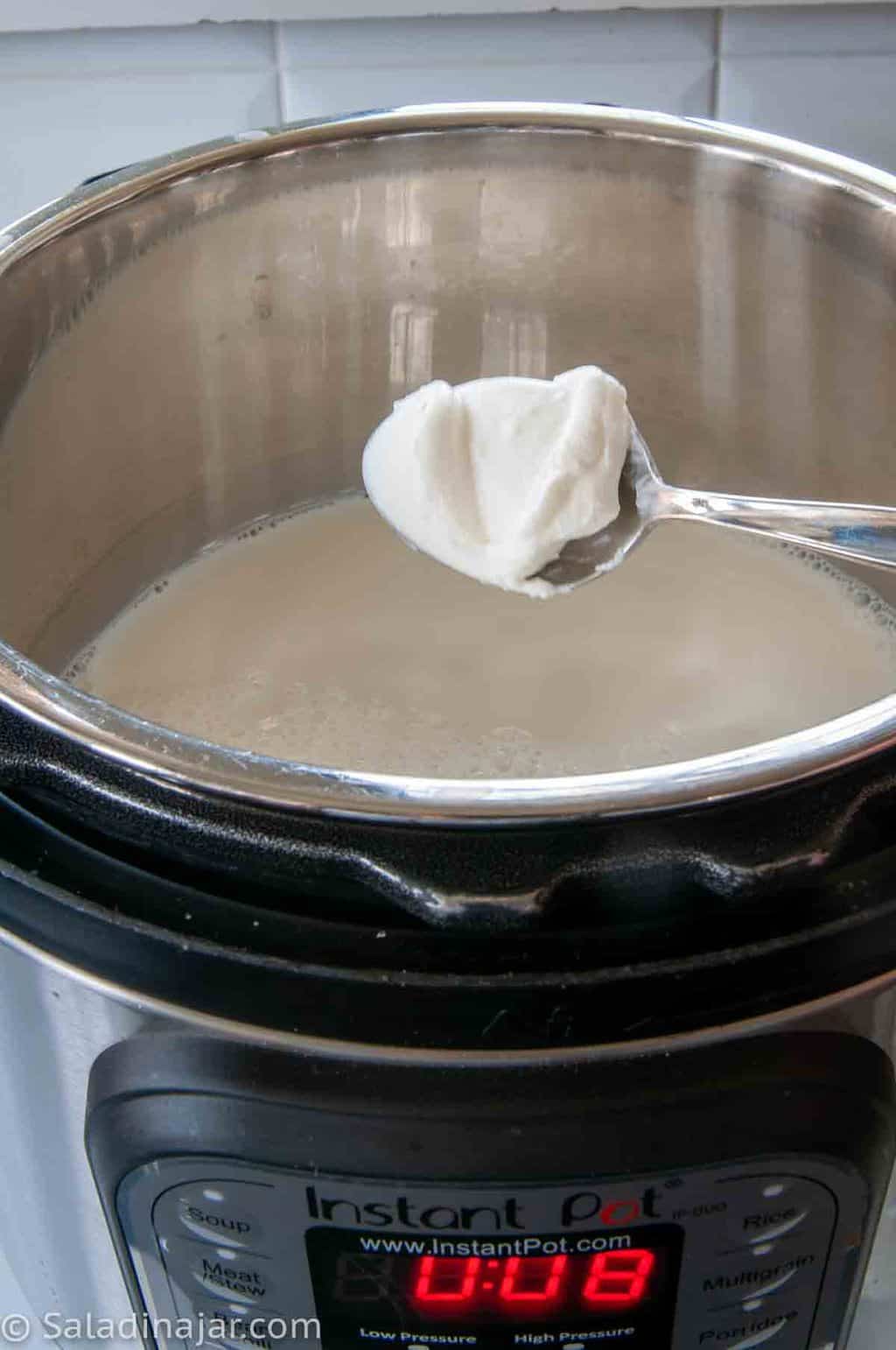
The yogurt is set for 5 hours. Your timing may vary.
To check your yogurt, gently remove the lid and shake the yogurt ever so gently. You must start over if you stir it and disturb the little yogurt bodies.
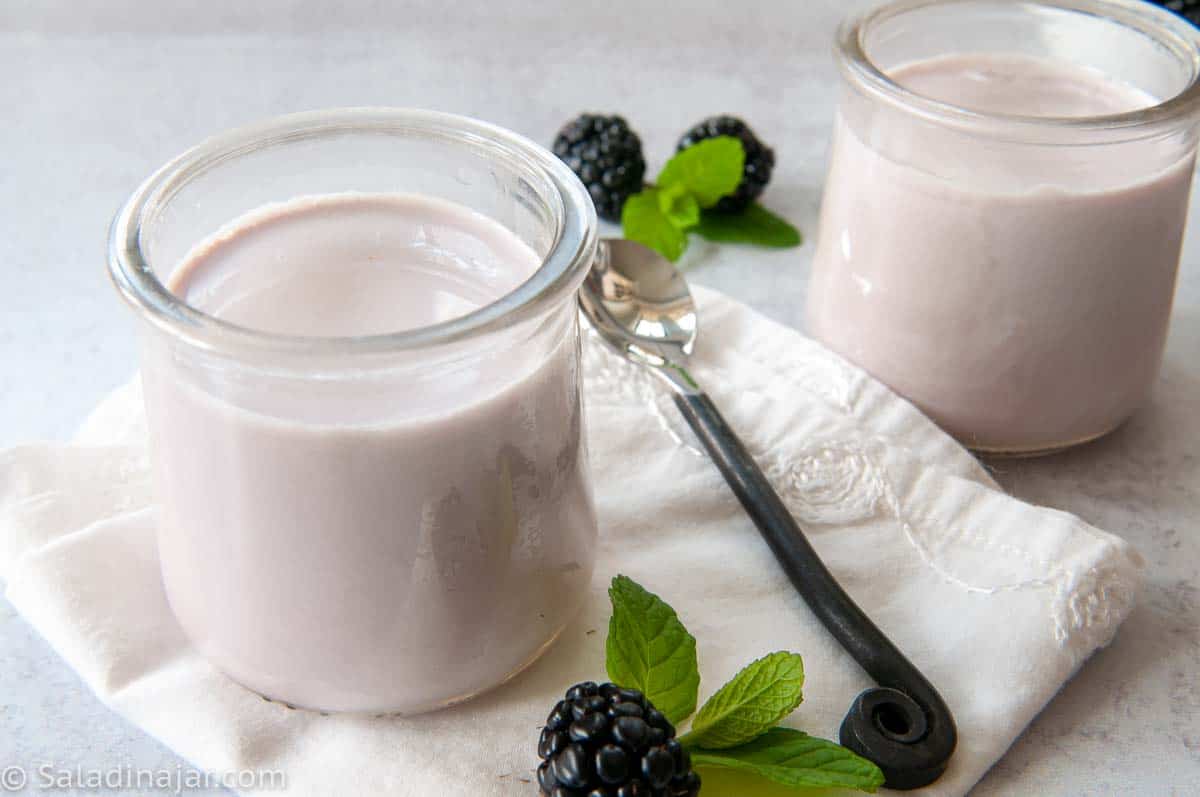
Chill for 2-3 hours before eating.
Frequently Asked Questions
Ultra-filtering milk removes lactose and much of the sugar. Concentrated protein is another result.
The average cup of regular milk contains 8 grams of protein. Fairway and other brands boast 13 grams of protein in 1 cup of milk.
Ultra-pasteurized milk is heated to a high temperature (280˚F). The process results in longer storage capabilities. Yet, the high temps actually damage some of the protein. You need more protein, not less, to make spoonable yogurt. (See the addendum above. Some brands do seem to work.)
Ultimately, the more protein available, the thicker your yogurt will be.
(Read the next question and answer to get the bigger picture.)
Yes, ultra-filtered milk is pasteurized.
Myth: The purpose of heating milk to 180˚F before incubation is to kill all bacteria.
Truth: According to Brod and Taylor, heating milk before incubating yogurt (never boil) removes the handcuffs from certain proteins, enabling them to join the yogurt party. The more, the merrier when you want thick yogurt.
So yes. Heating ultrafiltered milk to 180˚F is unnecessary when making yogurt. But it’s still completely safe.
Yes. I’m not sure how that name got started. Even with the traditional method, boiling your milk when making yogurt is not a good idea.
Diafiltered milk is another name for ultra-filtered milk. This term seems more common in Canada.
It takes less than 5 minutes to prepare your starter and milk. The rest of the time will be hands-off as your yogurt incubates (sits in a warm place). Think of a hen sitting on her eggs.
There is no exact time. The answer depends. How tart you like your yogurt and the temperature of your incubation system are factors. Mine usually sets in 5 hours at 100˚F. I prefer mild yogurt.
Some people like to incubate all night. Try it either way until you get the product you want.
The starter inoculates the milk and starts the process of making yogurt. To do its job, it must contain little yogurt bodies (aka healthy bacteria). It can be grocery store yogurt, homemade yogurt, or specially formulated freeze-dried starter.
For the best chance at success, use very fresh, unflavored yogurt. I’ll admit to using vanilla-flavored yogurt with sugar added in the past. It turned out OK.
No. Use unflavored yogurt with active cultures and no additives such as gelatin. Regular yogurt, Greek yogurt, organic yogurt…any of them is fine.
I like mine thick, too.
Strain it. The process is no different from straining yogurt made the traditional way. Read these posts for more ideas about straining: using a yogurt pouch or a large coffee filter.
An Instant Pot is super-easy if it is big enough to suit your needs. An oven you can set to 100˚F is big and easy.
Beyond that, you may have to get creative. I have collected lots of ideas from my readers over the years. Read about them here: ways to incubate yogurt without a yogurt machine.
This is a hard question right up there with “when will I know he (or she) is the right one?” The answer is almost the same. Ha!
Experience is the best teacher, but failure might be even better. But let’s give it a shot.
Uncover your yogurt without moving or jostling it. Your incubation system should have a sign: DO NOT DISTURB! When carefully jiggled, your yogurt should barely wiggle.
If it’s not ready, give it another hour or so and check again. If your yogurt still isn’t firm after more incubation (10 hours + or -), smell it.
If it smells OK, add more starter. A different starter would be even better. Stir well. Incubate again for 5-10 hours.
If that doesn’t work and it still smells fine, make smoothies. You could also try making ricotta cheese with your failed batch. It’s delicious and easy.
Yes, Regular milk contains 8 grams of protein per cup. Ultra-filtered milk averages 13 grams of protein per 1-cup serving. That means your finished cold-start yogurt will contain 13 grams of protein per cup.
If you like thicker yogurt and decide to strain it, you’ll get even more protein. If you are a protein fanatic, check out this post for more ways to pump up the protein in your yogurt.
The general answer is for two weeks. If it smells bad or you see any mold (usually pink), throw it out.
It depends. Read this comparison between the cold start and traditional methods and decide for yourself.
Help at Your Fingertips: For questions or suggestions, email Paula at saladinajar.com. If you need help, I’m happy to troubleshoot via email (faster than leaving a comment). Attach pictures and as many details as possible for the best advice.
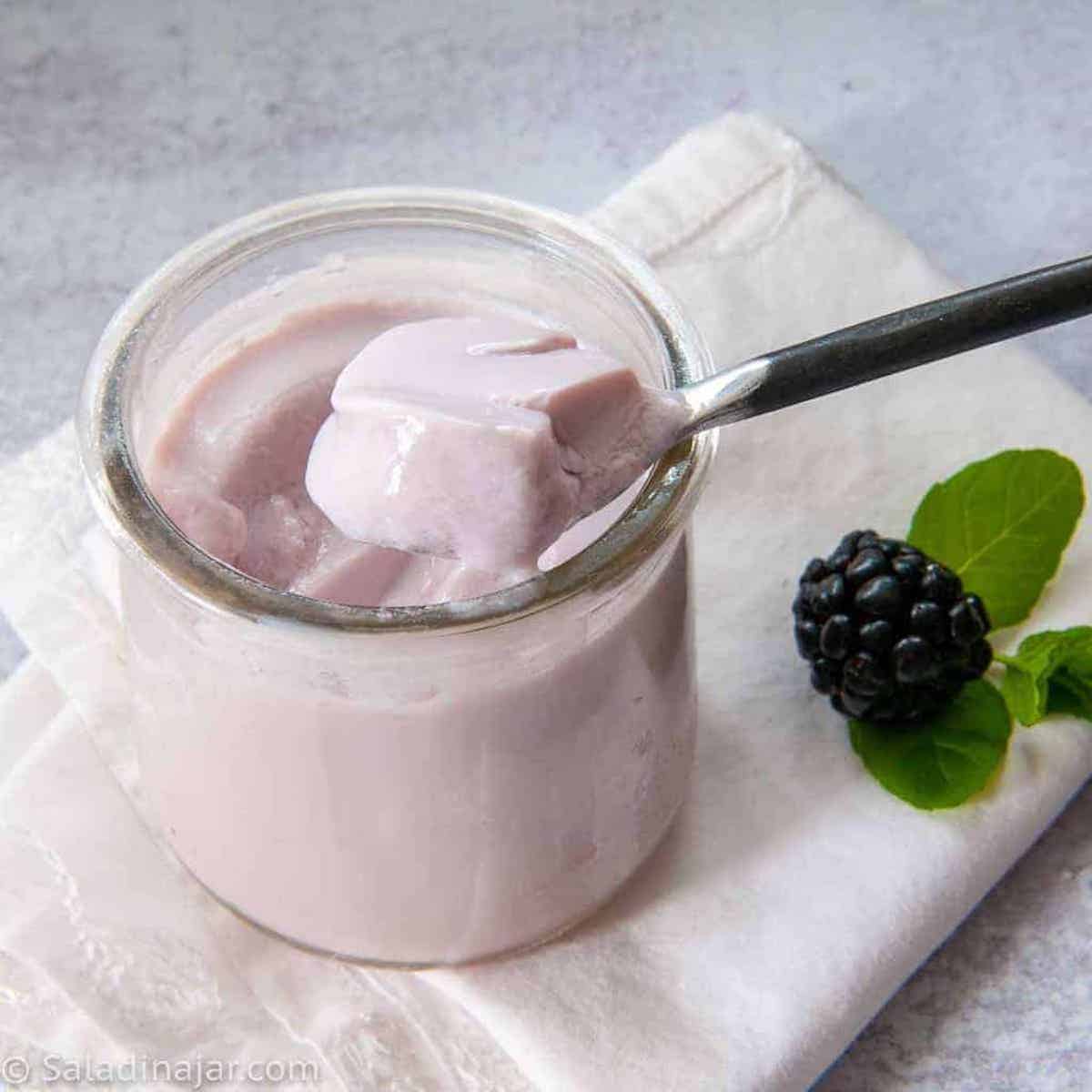
Cold Start Yogurt Recipe
Rate this recipe
(5 stars if you loved it)
Video
Ingredients
- 1 liter (1031 g) ultra-filtered whole milk or use 2% or non-fat ultra-filtered milk
- 1 tablespoon unflavored yogurt homemade or storebought
Instructions
- Pour 1 liter (1031 g) ultra-filtered whole milk into an Instant Pot or a large bowl such as a 2-quart Pyrex pitcher.
- Whisk a small amount of cold milk into 1 tablespoon unflavored yogurt until it is smooth.
- Stir thinned “starter” into cold milk.
- If using an Instant Pot, position the lid on top and push the Yogurt button. Time should be 5-9 hours according to the level of tartness you prefer. If you are doing overnight, set the pot to finish when you wake up.
- If using a bowl, place the pitcher in a warm environment. Keep the temperature at a constant 100-110˚F level.
- Check yogurt after 5 hours. When yogurt sets, it will look like Jello with only the slightest jiggle. If you’re not sure, dip out a spoonful to see if the yogurt will stand up on its own. If you want a firmer set, return it to the warm place without jostling and check again later. Once you stir the yogurt, incubation is over. Remember that it will become somewhat thicker when chilled.
Notes
- If you want Greek yogurt, strain the yogurt when the incubation period completes. You can strain yogurt on the counter for a couple of hours. It’s safe. If you feel more comfortable (and have the room) set your strainer in the refrigerator.
- The nutritionals apply only to yogurt made with whole milk that has not been strained.
Equipment
Nutrition
All images and text ©️ Paula Rhodes for Salad in a Jar.com

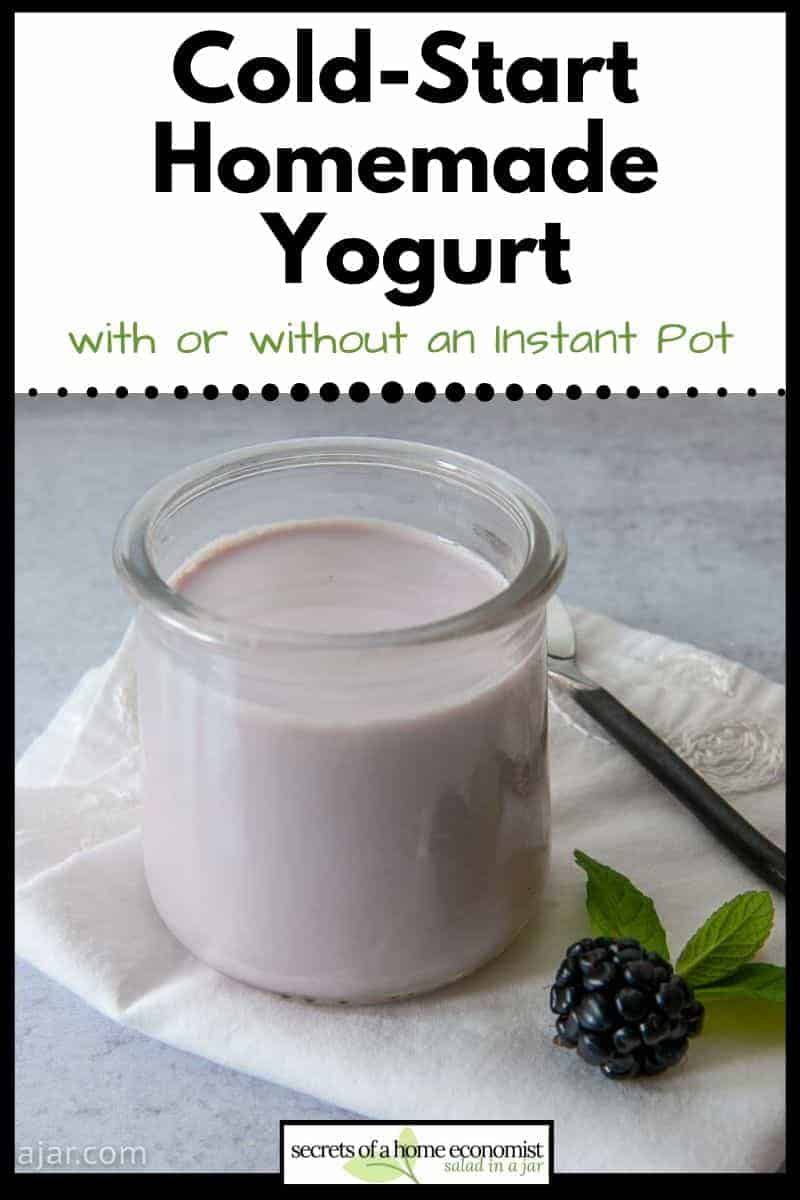



Paula Rhodes, owner
As a retired home economist, I created Saladinajar.com to share my belief that you don’t have to be a chef to find joy in creating homemade food worth sharing. Bread machines (used in an unconventional way), homemade yogurt, and quick microwave recipes are my specialty.